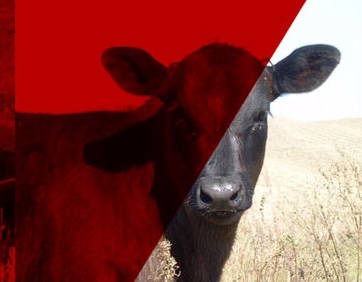About 20% of the cowherd in Nebraska calves in the fall time of the year. A fall-calving herd provides a different time of the year to market calves and needs less labor at calving compared to spring-calving herds.
Fall-calving cows in Nebraska will begin calving in August, late summer calving, to as late as October. Fall-calving cows usually calve in good body condition, but the challenge is keeping them in good body condition through the breeding season.
After calving, high quality grazed feed resources are limited. Both cool and warm-season grasses are decreasing in quality and quantity after calving and during lactation.
Grazing crop residues is an option, but lactating cows in the fall will need supplementation to meet protein and energy needs.
Reproductive success impacts profitability in the cow/calf enterprise. Investing time and resources to ensure reproductive success is important.
The challenge is how to feed the fall- calving cows economically and maintain adequate body condition when breeding season occurs between November and January. Calving and calf management are always important because it will be hot when they are born and cold for most of the time prior to weaning.
Management tips for fall-calving herds:
- Achieve and maintain mature cows in a Body Condition Score (BCS) of at least 5 (1 to 9 scale) through the breeding season.
- Maintain first-calf-females in a BCS of 6 through the breeding season.
- Avoid negative planes of nutrition, meaning what cows are eating doesn’t meet their nutrient needs, mainly protein and energy.
- Test forages for quality and nitrates.
- Design feeding programs using forage tests and determine gaps in nutrients needed by the lactating cow.
- Determine supplementation strategies to cover nutrient gaps in feeding program.
- Provide salt and mineral.
- Have bulls in breeding condition (BCS of 6) 45 days before the start of the breeding season. The same bulls can be used in both the spring and fall herds. Evaluate health and condition after pulling bulls from the spring-calving herd breeding season. Pay close attention to the condition and health of the young bulls.
- Bulls should always pass a BSE before turning out.
- Natural service and estrous synchronization with AI or a combination of natural service and AI can work for fall-calving systems.
- Monitor bulls during the breeding season. Low temperature can result in frostbite of the scrotum causing reduction in semen quality.
- Bull cost can be reduced by spreading them over two breeding systems per year.
- Weather conditions will be hot in August and early September. Provide shade and drinking water for calves and monitor calving pastures frequently.
- May need to provide bedding for the herd during extremely cold weather events.
- Provide protection for the herd during low windchill episodes.
- Fall calved calves weigh less than spring calved calves when weaned at the same age.
- Creep feeding the calves will increase calf weight at weaning but will not take lactation stress off the cow. Take a look at the economics of creep feeding: (https://beef.unl.edu/creep-feeding-beef-calves-profit-or-expense/).
- Have a weaning strategy. Will calves be weaned early or will calves remain on the cows?
- If calves are early weaned, have a management plan for them.
- Keep heifer calves growing at a rate that they have the potential to be replacements.
For fall-calving cows, the feed resources available for grazing are low in quality and will not meet cows’ nutrient needs during lactation. Supplementation will be needed. Don’t let cows slip in body condition prior to the breeding season. Weather conditions during the breeding season for fall-calving cows is unpredictable, but in Nebraska, will usually be cold and maybe snow or other precipitation.
Cover crops (secondary forage crops) fit nicely into fall-calving systems. Cover crops provide a high-quality feed resource to fall-calving herds (lactating cows, bulls, and calves) with little to no supplementation needed. Secondary forage crops can be planted in seed corn fields, after silage harvest, or after wheat harvest.
Fall-calving allows for marketing calves at a different time of the year as compared to spring- calving calves. Cow, bull and calf management and feeding programs of fall-calving herds is much different than spring-calving herds because of time of the year, weather conditions, and the grazed feed resources available.

